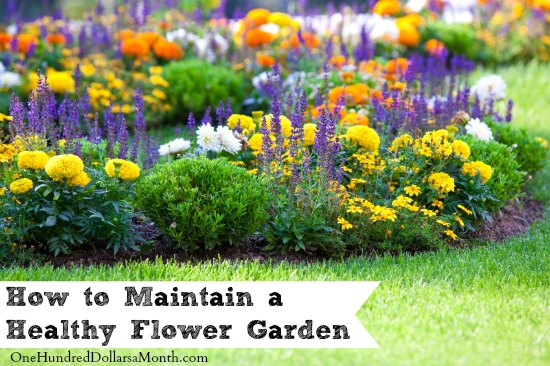One major setback gardeners face is plant diseases. When a plant gets a disease, they wonder if all their plants will die? What should they do next? How did that happen? How can they prevent it from recurring? Let’s see how to keep a healthy flower garden.
Not only is a healthy flower garden aesthetically pleasing, but it can give a sense of fulfillment to the owner. Hence, instead of waiting for a problem to pop up in a garden, it is better to consider the best defense against disease to be a good offense. The weapons, in this case, are various ways and tips to eliminate disease and keep a healthy flower garden.
Table of Contents
Signs of a healthy garden
A glance at a garden can be the picture of health, but on a deeper dive, the garden might not be so. To keep a healthy garden, it is essential to know what a healthy garden should possess so that it is evident to the gardener in the case of the opposite. These indicators or signs include;
- Water infiltration: Good soil should absorb water when poured into it in less than five seconds.
- Foliage color and growth: The leaf is an excellent indicator of plant health. Faded or pale leaves or hair on the body of the leaves shows the plant is diseased. Do a soil patch test to check for disease type.
- Little to no weeds: Weeds are usually undesired and shouldn’t be found all over your garden. They can also reduce nutrient allocation to your plants.
- Presence of beneficial insects: Insects are required for pollination and should find the plant desirable enough to perch on.
How to keep a healthy Garden
The following are ways to eliminate diseases and keep a healthy flower garden;
- Inspecting flower plants before purchase: Check your flower plant to know if diseased before buying them. It is better not to introduce a diseased plant to the garden than to try so hard to curb the spread of the disease later on. Check the leaves, the stems, the root, and even the soil condition it is planted in.
- Manure choice should be fully composted yard waste: The materials used for making manure decompose at different rates. Some faster than others; make sure that all are fully composted. The longer the compost time, the higher the temperature generated, killing pathogens in the manure.
- Bugs are not your friends: Insect damage to plants is much more than the fact that it decreases its aesthetic appeal. Viruses and bacteria often can only enter a plant through some opening that bugs create. Insects can also act as carriers of viruses, spreading them from one plant to the next. There are, however, some plant friendly animals like earthworms which are indicators of healthy soil.
- Using the correct fertilizer: Fertilizers are supposed to enrich the plant, but too much of it can cause damage. Excess fertilizer can burn roots, reduce their ability to absorb water, and affect plant overall health. Burnt root makes the plants more susceptible to stress from drought, cold, and heat. Plants that are malnourished look weaker, smaller, and might have leaf spots on them. A more potent, well-nurtured plant, on the other hand, has a stronger immune system to fight off diseases.
- Choose plant disease-resistant varieties: Disease-resistant plants have the edge of being able to resist the disease when attacked. They are better survivors.
- Choosing and siting flower plants appropriately: A healthy garden follows the principle of knowing where to place each flower. Shade-loving plants should sit in the shade, under the covering of other big flowers or under a makeshift to enable them to bloom.
- Ensure proper watering: Create a watering schedule and adjust it frequently throughout the growing season. Your plants need just about the right amount of water to bloom.
Visit Partners in Home for more tips on growing a healthy garden.





